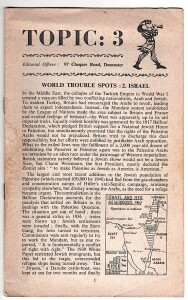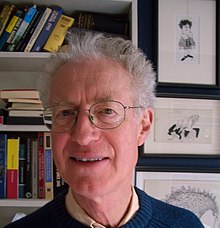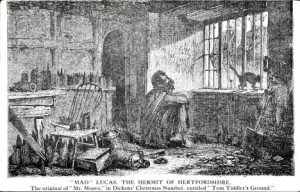
( Initially from J. D. Mortimer, An Anthology of the Home Counties 1947), but including commentaries from other sources.
The Hermit of Ickenham ( lived c 1655)
Roger Crabb, an eccentric character, of whom there is a curious account in a very rare pamphlet, entitled ‘The English Hermit, or the Wonder of the Age (1655), lived many years in a cottage at Ickenham, where he subsisted on three farthings a week, his food being bran, mallows, dock leaves, grass and the produce of a small garden; his drink water; for he esteemed it a sin to eat any living creature, or use any other beverage. Towards the latter part of his life he removed to Bethnall Green, where he died in 1680, and was buried at Stepney.
Daniel Lysons, The Environs of London
Actually, Mr Crabb seems to have lived on a rather healthy vegan diet from the age of twenty, when he was a soldier on the parliamentary side during the English Civil War. He later became a haberdasher in Chesham, Bucks and afterwards retired to Ickenham, where he became a pacifist and a proto-Anarchist. He was an anti-Sabbatarian, arguing that Sunday was not a special day. He inveighed against the evils of property, the Church and the Universities. According to one source, he ate potatoes and carrots as part of his vegan diet, but towards the end of his life subsisted mainly on bran, dock leaves (Rumex) and parsnips. Bran is full of vitamins, as are dock leaves, but the latter also contains oxalates, which can induce kidney stones if eaten to excess. All parts of the common mallow are nutritious, however. The leaves can be boiled and made into a soup, and the roots can be candied.
The Frimley Hermit ( 17th century)
At the end of this Hundred, I must not forget my noble friend, Mr Charles Howard’s Cottage of Retirement( which he called his Castle) which lay in the middle of a vast healthy country, far from any Road or Village in the hope of a healthy Mountain, where, in the troublesome times he withdrew from the wicked World, and enjoyed himself here, where he had only one Floor, his little Dining Room, a Kitchen, a Chapel, and a Laboratory. His utensils were all of Wood or Earth; near him were half a Dozen Cottages more, on whom he shew’d much compassion and charity.
John Aubrey: Perambulation of Surrey
Continue reading →
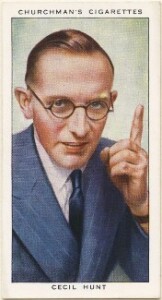 A circle is that part of the theatre which has the most expensive seats
A circle is that part of the theatre which has the most expensive seats


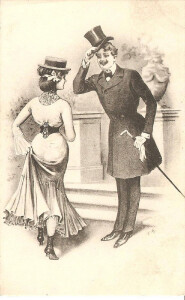 If Everybody’s Best Friend ( 1939) is to be believed, people were still debating the propriety of men giving up seats to women, whether or not it was necessary to doff a hat to a lady or where a man should walk on a pavement when accompanying a lady, as they had done for centuries before and perhaps still do. On the question of who should pay on a night out, to an earlier generation brought up before the advent of Women’s Liberation, there is no question that a man should pay for everything. Notice that it is tacitly assumed that once the man and woman are married, it is certainly the husband who must pay for a meal and for seats in a theatre or cinema, even though the wife may have an income from her job. But have things changed that much ?
If Everybody’s Best Friend ( 1939) is to be believed, people were still debating the propriety of men giving up seats to women, whether or not it was necessary to doff a hat to a lady or where a man should walk on a pavement when accompanying a lady, as they had done for centuries before and perhaps still do. On the question of who should pay on a night out, to an earlier generation brought up before the advent of Women’s Liberation, there is no question that a man should pay for everything. Notice that it is tacitly assumed that once the man and woman are married, it is certainly the husband who must pay for a meal and for seats in a theatre or cinema, even though the wife may have an income from her job. But have things changed that much ?
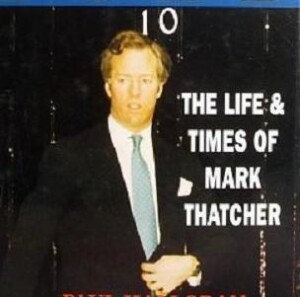
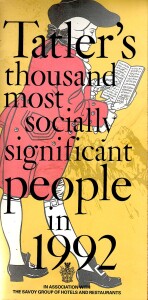 and perhaps still newsworthy, according to Tatler’s Thousand Most Socially Significant People in 1992.
and perhaps still newsworthy, according to Tatler’s Thousand Most Socially Significant People in 1992.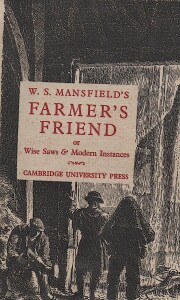
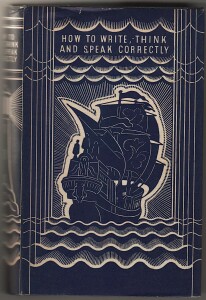
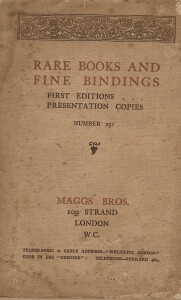
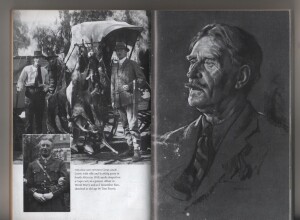
 Cecil Hunt ( 1902 – 54) was a journalist, editor, novelist and anthologist best known throughout the English-speaking world for his compendiums of schoolboy ‘ howlers’. His first collection appeared in 1928 and proved to be a best-seller. At various times afterwards he produced other anthologies of howlers as well as guides to journalism, which he had studied at King’s College, London, and creative writing, books on the origins of words and a collection of unintentionally funny letters. He also wrote novels under two pseudonyms ( Robert Payne and John Devon). Interestingly, Hunt was President of the London Writers’ Circle and was instrumental in establishing Swanwick Writers’ Summer School. He died at just 51, but ironically his wife lived to be 107.
Cecil Hunt ( 1902 – 54) was a journalist, editor, novelist and anthologist best known throughout the English-speaking world for his compendiums of schoolboy ‘ howlers’. His first collection appeared in 1928 and proved to be a best-seller. At various times afterwards he produced other anthologies of howlers as well as guides to journalism, which he had studied at King’s College, London, and creative writing, books on the origins of words and a collection of unintentionally funny letters. He also wrote novels under two pseudonyms ( Robert Payne and John Devon). Interestingly, Hunt was President of the London Writers’ Circle and was instrumental in establishing Swanwick Writers’ Summer School. He died at just 51, but ironically his wife lived to be 107.
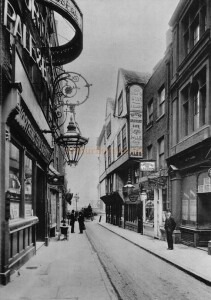 We have seen ( previous Jot) how, in his first book, Bohemia in London, the young Arthur Ransome was happy to confess his bibliophilia. He seemed to love second hand books more than brand new ones, but he hated the practice of selling unwanted books ( whether new or second hand, he doesn’t say) given as gifts ending up on bookseller’s shelves. Certain people feel no guilt about doing this; they assume, wrongly, that they will never be found out, but if the gift is inscribed there is a reasonable chance that the bibliophile who gifted the book will discover it in some bookshop or bookstall eventually.
We have seen ( previous Jot) how, in his first book, Bohemia in London, the young Arthur Ransome was happy to confess his bibliophilia. He seemed to love second hand books more than brand new ones, but he hated the practice of selling unwanted books ( whether new or second hand, he doesn’t say) given as gifts ending up on bookseller’s shelves. Certain people feel no guilt about doing this; they assume, wrongly, that they will never be found out, but if the gift is inscribed there is a reasonable chance that the bibliophile who gifted the book will discover it in some bookshop or bookstall eventually.
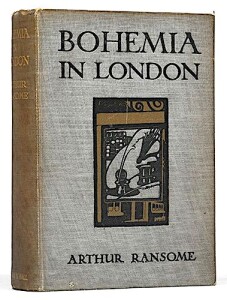 in collectable condition fetching £500 or more.
in collectable condition fetching £500 or more.